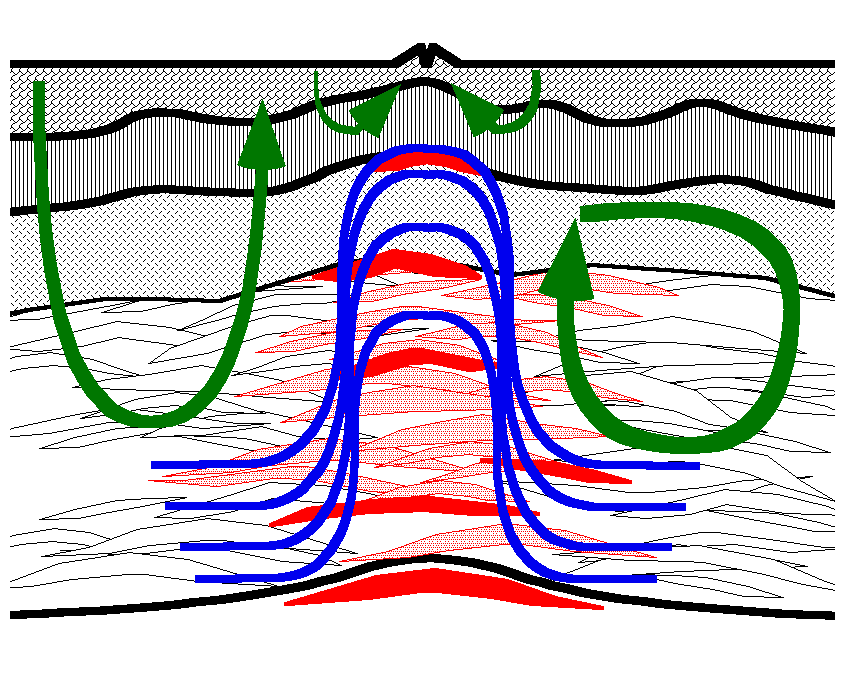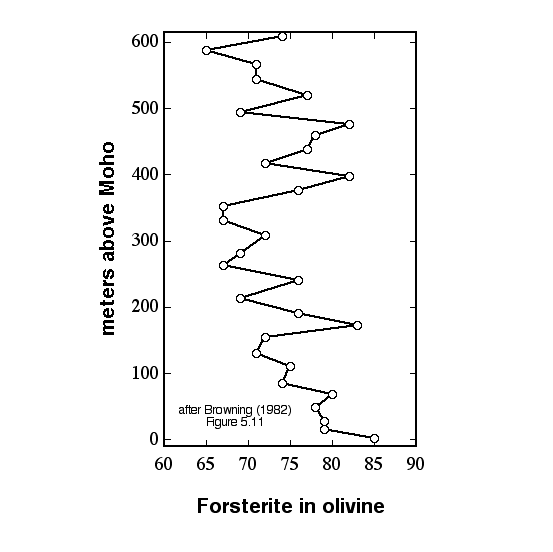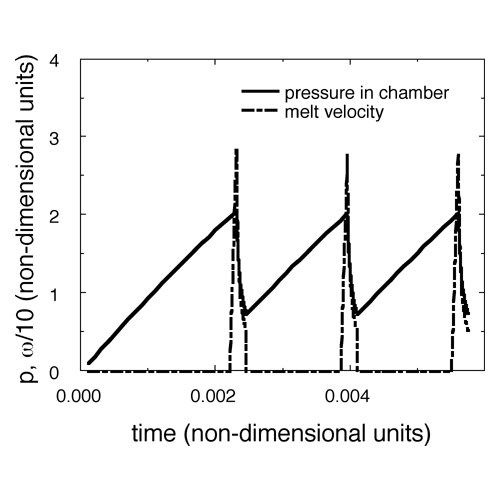|
|
 |
Igneous accretion, thermal history, and composition of the oceanic lower crust
- It has been proposed that all magmas at intermediate- to fast-spreading mid-ocean ridges rise from the mantle into the seismically observed "shallow melt lens". Eruption of magmas from this lens forms sheeted dikes and lava flows. Crystallization in this lens, followed by ductile flow of cumulates downward and outward, forming the gabbroic lower crust in a "gabbro glacier". However, gabbroic lenses within peridotite in the crust/mantle transition zone of the intermediate- to fast-spreading Oman ophiolite have compositions in equilibrium with sheeted dikes and lavas that formed the upper crust at an oceanic spreading ridge. Thus, not all lavas necessarily erupt from a shallow melt lens, and not all gabbroic rocks are formed in such a melt lens.
- Compositional layering in gabbroic lenses in the crust/mantle transition zone of the Oman ophiolite shows significant, systematic variation on a cm-scale. This suggests that the lenses were melt-filled, with crystallization on their edges, and that they were surrounded by rocks with little or no intergranular melt.
- Significant compositional layering in the lower 600 meters of the gabbroic lower crust in the Oman ophiolite is present on scales of less than 10 meters. Although composition shows no systematic relation with height in the crust, compositional variables (Mg# in olivine and clinopyroxene, An in plagioclase, Ni, Mn in olivine, Cr in clinopyroxene) are highly correlated. Such correlations would be destroyed by substantial amounts of reactive porous flow of melt through the lower crustal gabbros. Thus, the upper crust is not formed via diffuse porous flow of melt through the lower crust after formation of the compositional layering. Instead, channelized flow – probably in hydrofractures – is required. Further, the ubiquitous presence of 10% melt throughout the lower crust, to facilitate grain boundary sliding in a "gabbro glacier" mechanism, is precluded by these observations.
- Analysis of crystal size distributions in Oman gabbros from a full crustal section shows that the upper half of the gabbros cooled significantly faster than the lower half. This is interpreted in terms of hydrothermal convection in the upper half of the gabbro section, producing near vertical isotherms a few km from the spreading ridge, in contrast to conductive cooling of the lower half of the gabbro section, with nearly horizontal isotherms extending far off axis.
- ONGOING RESEARCH: Microstructural analysis to determine the stress/strain history of the crust, including use of olivine sub-grain boundaries to constrain the viscosity of the lower crust during deformation, and use of plagioclase shape fabrics to test the hypothesis that there is a large increase in cumulative strain with increasing depth in the crust. "Geospeedometry" to place additional constraints on the variation of cooling rate with depth in the crust, including analysis of exsolution lamellae in pyroxene and plagioclase, and analysis of trace element zoning in plagioclase and olivine. Ongoing geochemical analyses to determine the composition of the crust and upper mantle in Oman, including highly incompatible trace elements such as Ba, Th and U as well as compatible elements such as Ni and Os, to constrain the effects of hydrothermal alteration, hypotheses regarding igneous petrogenesis, and ideas about recycled components in oceanic island basalts.
|
|


